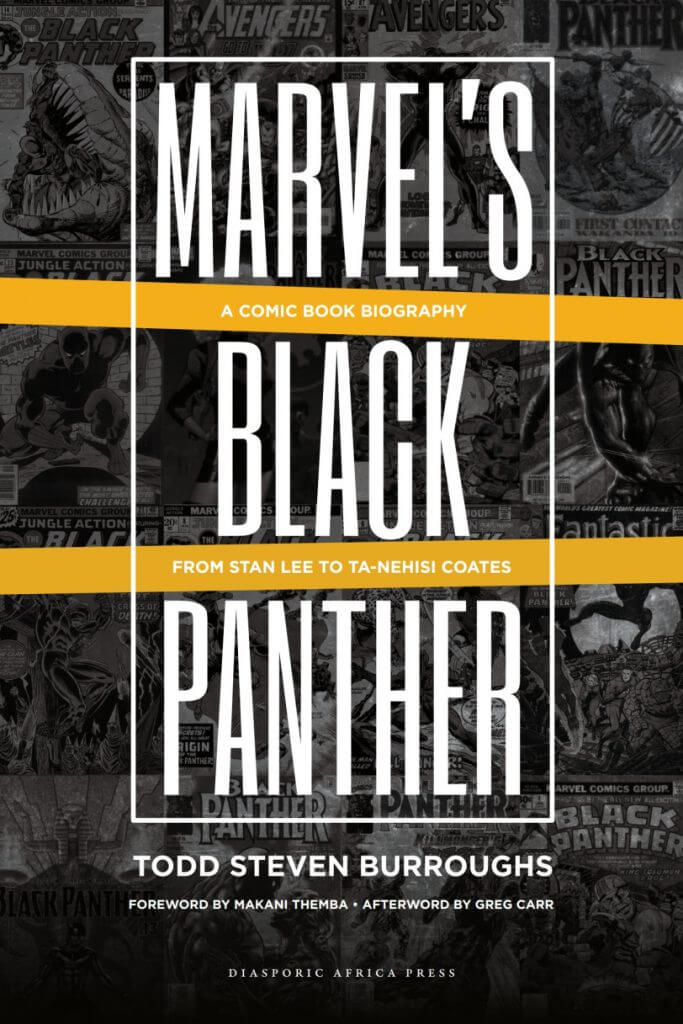- April 30, 2018
- By Liam Farrell

Everyone knows who Black Panther is—now. The titular film on the superhero, an African prince named T’Challa who uses the fantastical technology of his fictional kingdom Wakanda to fight bad guys, has grossed more than $1.3 billion worldwide since its release in February and become a cultural phenomenon.

But Black Panther didn’t just spring out of Hollywood a few years ago, and author Todd Steven Burroughs M.Jour. ’94, Ph.D. ’01 recently wrote a book on the character’s more than 50-year history, “Marvel’s Black Panther: A Comic Book Biography, from Stan Lee to Ta-Nehisi Coates.” As T’Challa pounces into multiplexes on Friday in “Avengers: Infinity War,” Terp asked Burroughs for five things everyone should know about the character.
1. He was almost called the “Coal Tiger”: When the powerhouse Marvel Comics duo of Stan Lee and Jack Kirby was first developing the character that became Black Panther in the mid-1960s, an early version was what Burroughs describes as a “swashbuckling, Errol Flynn-type character” named the Coal Tiger.
“He looks like a black Musketeer,” Burroughs says. “We almost went to a movie called ‘The Coal Tiger.’”
2. He gets arrested in his first Avengers comic: Black Panther made his debut with the Fantastic Four in July 1966 and appeared for the first time with the Avengers in May 1968. In a politically resonant story arc, the Black Panther traveled to Avengers headquarters, found the superteam murdered and was mistakenly arrested for killing them. (They were actually taken out by the Grim Reaper, and later revived.)
“This is a case of public profiling,” Burroughs says, terming it an example of “superhero-ing while black.”
3. The comics weren’t always so politically brave: Although unconnected to the political party sharing the same name, the Black Panther was negatively impacted by the racial upheaval of the 1960s and 1970s.
“After the Black Panther Party came out, there was an attempt to de-Africanize the character,” Burroughs says.
In 1970, T’Challa adopted the alias Luke Charles and became a schoolteacher in Harlem. A few years later, Marvel changed his name to the Black Leopard in a gambit poorly received by fans and writers alike.
“That didn’t work, thank God,” Burroughs says.
4. Black writers rescued him from obscurity: Comic book characters undergo lots of twists and turns to keep fans interested, but Burroughs says Black Panther became a compelling character again because of black writers like Reginald Hudlin and Christopher Priest, who reasserted the African origins of the character in the 1990s and 2000s. The Black Panther of Hudlin and Priest, Burroughs says, is “unapologetically black.”
“Black Panther went from a quiet character to this super cool, Batman-like character,” he says

5. He had an iPhone in 1998: Black Panther has always been a master of technology, and some writers have played up that aspect of the character, Burroughs says. A November 1998 issue was more foresighted than other stories, giving the superhero a “kimoyo card” that is a dead ringer in shape and ability for the ubiquitous devices now in pockets and purses around the world.
For more information on Burroughs’ book, visit his website.
